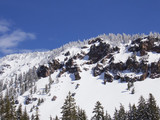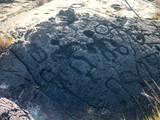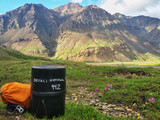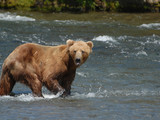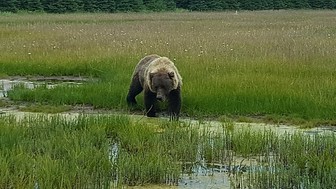Government Grants
Business Grants
Home Owner Programs
Federal Programs
About Us
Citizen Science for Cluing in to the Health of Alaska's Coastal Parks: Engaging Local Communities in Tracking Seabird Mortality
High latitude, high elevation, and coastal areas of Alaska¿s parks have been identified by scientists as vulnerable to the effects of climate change.
As part of the Climate Change Response Strategy developed by the National Park Service in September of 2010, the Alaska Region has been identified as one of the key areas within NPS to focus resources aimed at understanding, mitigating, applying adaptive science and communicating information related to climate change.
Since 2014, North Pacific and Arctic coastlines of the US have witnessed seven seabird mass mortality events, a rate far exceeding historical baselines and concurrent with warming oceans.
Four occurred in Alaska and were evident in at least five coastal parks, including the largest die-off.
Seabirds are ecologically important and highly visible indicators of ocean conditions.
Central to the NPS mission is increasing public awareness about the status of park resources, especially when they appear imperiled.
Seabird die-offs have raised concern in many local communities about the health of the marine environment and the safety of consuming food harvested from the ocean.
The objective of this agreement is to engage communities in directly monitoring their local marine resources and ecosystem health will increase science literacy and promote environmental stewardship through partnership with University of Washington¿s Coastal Observation and Seabird Survey Team (COASST).
This Cooperative Agreement (Agreement) is being entered between the U. S. Department of the Interior, National Park Service (NPS), and University of Washington (UW).
This project will provide a mechanism for increased detection and tracking of unusual mortality events that can inform ongoing Alaska-wide mortality-monitoring efforts with partner agencies and organizations (US Fish & Wildlife Service [USFWS] Migratory Bird Management and Alaska Maritime National Wildlife Refuge, US Geological Society [USGS] Alaska Science Center and National Wildlife Health Center, National Ocean and Atmospheric Association [NOAA] Sea Grant, Bering Watch, Local Environmental Observer [LEO] Network, and Gulf Watch Alaska) and provide baseline information on mortality of seabirds at and near parks to help improve detection and assessment of future die-offs.
One objective is to engage and recruit resident communities and NPS staff of Alaska¿s coastal parks to monitor beaches in their community and/or neighboring park for beach cast seabirds as part of partnership that includes the Coastal Observation and Seabird Survey Team (COASST) at UW to better understand mass seabird mortality events and the health of marine resources along Alaska¿s coasts.
Another objective is to increase awareness among avian biologists working across Alaska and train them in the COASST Seabird Die-off Alert protocol at the 2019 Alaska Bird Conference.
These workshops will help NPS:
(i) increase detection rates and reduce response times to unusual or massive mortality events; (ii) improve the coverage, accuracy and precision of beached bird baseline data within and near NPS units; (iii) broaden and deepen diverse participation through greater community and agency communication and involvement; (iv) increase community awareness of COASST and NPS efforts such that chance observations of seabird mortality are more readily reported from remote coastal communities; (v) increase public awareness through visual media produced through an OASLC Student Conservation Association Agreement about the severity of seabird mortality events in Alaska¿s coastal national parks and the actions NPS is taking in partnership with COASST.
Coastal Observation and Seabird Survey Team (COASST) will train local residents, NPS staff, and scientists in data collection of beached birds for 1) monthly beach surveys, where they will learn to identify and collect condition data from each carcass found and 2) Die-off Alert (DoA) training, designed to prepare participants to collect information that can be integrated with and compared to baseline data generated by monthly surveys.
Participants of both trainings are given a "tool kit," for contributing observations.
Bird identification based on evidence collected and using the COASST Beached Bird key are independently verified.
Participants receive regular communications from COASST designed to further learning and engagement and have access to data summaries that put their observations in the context of the baseline and current trends.
During an unusual mortality event, participants, agencies and partners within an affected region receive alerts and relevant information as it unfolds.
Increasing COASST presence in these parks and communities will potentially reach over 5,000 Alaska residents (COASST participants range from 8 to 80 years old), which reside in local communities listed in the proposal.
Roughly, 160 trained COASST participants will result from this effort.
Coastal Observation and Seabird Survey Team (COASST) will conduct trainings in FY19/FY20 to:
1) initiate COASST at Deering (Bering Land Bridge National Preserve [BELA]), Illiamna (Lake Clark National Park & Preserve [LACL]), Kivalina (Cape Krusenstern National Monument [CAKR]), Sitka (Sitka National Historical Park [SITK]), Wales (BELA), and Barrow ( Iñupiat Heritage Center [INHC]); 2) refresh COASST at Gustavus (Glacier Bay National Park & Preserve [GLBA]), Nome (BELA), Kotzebue (CAKR), Seward (Kenai Fjords National Park [KEFJ]), and Skagway (Klondike-Gold Rush National Historical Park [KLGO]); and 3) present COASST at the 2019 Ocean and Science Learning Center (OASLC) Teacher Workshop and the Alaska Bird Conference.
As part of the Climate Change Response Strategy developed by the National Park Service in September of 2010, the Alaska Region has been identified as one of the key areas within NPS to focus resources aimed at understanding, mitigating, applying adaptive science and communicating information related to climate change.
Since 2014, North Pacific and Arctic coastlines of the US have witnessed seven seabird mass mortality events, a rate far exceeding historical baselines and concurrent with warming oceans.
Four occurred in Alaska and were evident in at least five coastal parks, including the largest die-off.
Seabirds are ecologically important and highly visible indicators of ocean conditions.
Central to the NPS mission is increasing public awareness about the status of park resources, especially when they appear imperiled.
Seabird die-offs have raised concern in many local communities about the health of the marine environment and the safety of consuming food harvested from the ocean.
The objective of this agreement is to engage communities in directly monitoring their local marine resources and ecosystem health will increase science literacy and promote environmental stewardship through partnership with University of Washington¿s Coastal Observation and Seabird Survey Team (COASST).
This Cooperative Agreement (Agreement) is being entered between the U. S. Department of the Interior, National Park Service (NPS), and University of Washington (UW).
This project will provide a mechanism for increased detection and tracking of unusual mortality events that can inform ongoing Alaska-wide mortality-monitoring efforts with partner agencies and organizations (US Fish & Wildlife Service [USFWS] Migratory Bird Management and Alaska Maritime National Wildlife Refuge, US Geological Society [USGS] Alaska Science Center and National Wildlife Health Center, National Ocean and Atmospheric Association [NOAA] Sea Grant, Bering Watch, Local Environmental Observer [LEO] Network, and Gulf Watch Alaska) and provide baseline information on mortality of seabirds at and near parks to help improve detection and assessment of future die-offs.
One objective is to engage and recruit resident communities and NPS staff of Alaska¿s coastal parks to monitor beaches in their community and/or neighboring park for beach cast seabirds as part of partnership that includes the Coastal Observation and Seabird Survey Team (COASST) at UW to better understand mass seabird mortality events and the health of marine resources along Alaska¿s coasts.
Another objective is to increase awareness among avian biologists working across Alaska and train them in the COASST Seabird Die-off Alert protocol at the 2019 Alaska Bird Conference.
These workshops will help NPS:
(i) increase detection rates and reduce response times to unusual or massive mortality events; (ii) improve the coverage, accuracy and precision of beached bird baseline data within and near NPS units; (iii) broaden and deepen diverse participation through greater community and agency communication and involvement; (iv) increase community awareness of COASST and NPS efforts such that chance observations of seabird mortality are more readily reported from remote coastal communities; (v) increase public awareness through visual media produced through an OASLC Student Conservation Association Agreement about the severity of seabird mortality events in Alaska¿s coastal national parks and the actions NPS is taking in partnership with COASST.
Coastal Observation and Seabird Survey Team (COASST) will train local residents, NPS staff, and scientists in data collection of beached birds for 1) monthly beach surveys, where they will learn to identify and collect condition data from each carcass found and 2) Die-off Alert (DoA) training, designed to prepare participants to collect information that can be integrated with and compared to baseline data generated by monthly surveys.
Participants of both trainings are given a "tool kit," for contributing observations.
Bird identification based on evidence collected and using the COASST Beached Bird key are independently verified.
Participants receive regular communications from COASST designed to further learning and engagement and have access to data summaries that put their observations in the context of the baseline and current trends.
During an unusual mortality event, participants, agencies and partners within an affected region receive alerts and relevant information as it unfolds.
Increasing COASST presence in these parks and communities will potentially reach over 5,000 Alaska residents (COASST participants range from 8 to 80 years old), which reside in local communities listed in the proposal.
Roughly, 160 trained COASST participants will result from this effort.
Coastal Observation and Seabird Survey Team (COASST) will conduct trainings in FY19/FY20 to:
1) initiate COASST at Deering (Bering Land Bridge National Preserve [BELA]), Illiamna (Lake Clark National Park & Preserve [LACL]), Kivalina (Cape Krusenstern National Monument [CAKR]), Sitka (Sitka National Historical Park [SITK]), Wales (BELA), and Barrow ( Iñupiat Heritage Center [INHC]); 2) refresh COASST at Gustavus (Glacier Bay National Park & Preserve [GLBA]), Nome (BELA), Kotzebue (CAKR), Seward (Kenai Fjords National Park [KEFJ]), and Skagway (Klondike-Gold Rush National Historical Park [KLGO]); and 3) present COASST at the 2019 Ocean and Science Learning Center (OASLC) Teacher Workshop and the Alaska Bird Conference.
Related Programs
Cooperative Research and Training Programs Resources of the National Park System
Department of the InteriorObtain Full Opportunity Text:
http://www.grants.gov
Additional Information of Eligibility:
Under this NOFO, only FY 2018 NIST SBIR Phase I awardees are eligible to submit applications.
Each applicant must qualify as a small business concern for R/R&D purposes, as defined in Section 1.05 of this NOFO, at the time of award.
In addition, the primary employment of the principal investigator must be with the small business at the time of the award and during the conduct of the proposed research.
Primary employment means that more than one-half of the principal investigator's time is spent working with the small business.
Primary employment with a small business precludes full-time employment with another organization.
Occasionally, deviations from this requirement may occur, which must be approved in writing by the NIST Grants Officer after consultation with the SBIR Program Manager.
Further, a small business may only replace the principal investigator on an SBIR Phase II award if the NIST Grants Officer provides prior written approval.
Personnel obtained through a Professional Employer Organization or other similar personnel leasing company may be considered employees of the awardee.
Full Opportunity Web Address:
http://www.grants.gov
Contact:
Agency Email Description:
Work
Agency Email:
Date Posted:
2019-04-09
Application Due Date:
Archive Date:
2019-04-19
Social Entrepreneurship
Spotlight
When it Comes to Social Enterprises, Failure is the Best Platform for Innovation

In the world of social enterprises, failure is a cringe-worthy moment nobody wants to talk about. But, social entrepreneurs can benefit from their failures.
